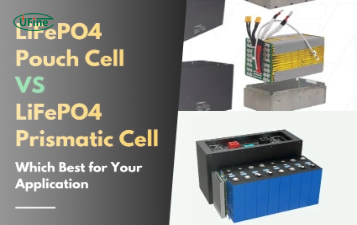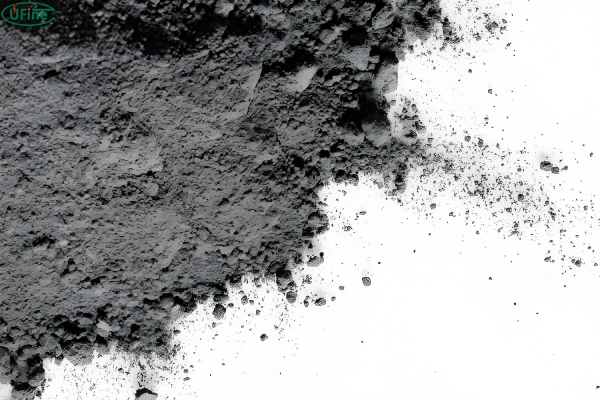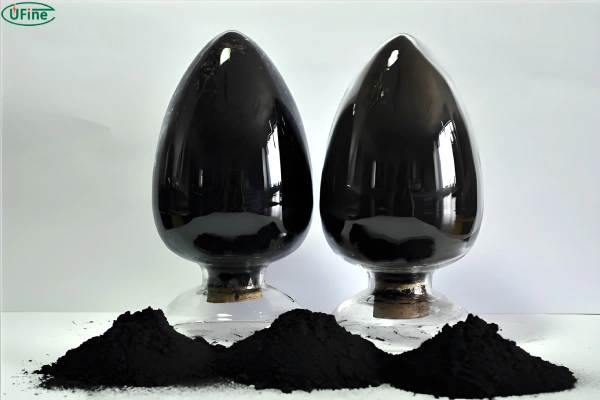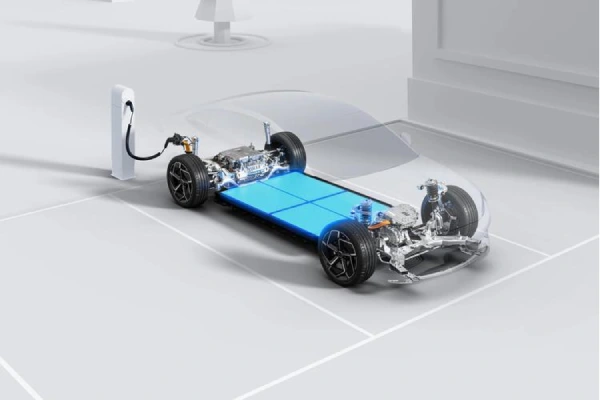
Part 1. Lithium battery cathode material industry
1. Lithium battery industry chain
The lithium battery cathode material industry chain involves many links and the industry chain structure is relatively complex.
Its upstream is mainly metal raw material suppliers and chemical product suppliers. According to different cathode materials, it can be subdivided into lithium source, iron source, phosphorus source suppliers and nickel, cobalt, manganese and other auxiliary material suppliers.
The midstream of the industry chain is lithium iron phosphate cathode material manufacturers and ternary precursor and ternary cathode material manufacturers.
The downstream is lithium battery manufacturers and application fields such as electric vehicles, energy storage, 3C, etc.
2. Overview of lithium battery cathode materials
Lithium battery is a commonly used secondary battery. Its working principle is to rely on the movement of lithium ions between positive and negative electrodes to achieve charging and discharging. Compared with other secondary batteries (such as nickel-cadmium, nickel-metal hydride, lead-acid batteries), lithium batteries have high working voltage, high energy density, long cycle life and no heavy metal pollution. They are widely used in consumer electronics, power tools, locomotive starting power supplies, electric vehicles and energy storage.
AGM VS Lithium VS Lead-Acid Battery: Comprehensive Comparison
Lithium batteries are mainly composed of cathode materials, negative electrode materials, diaphragms, electrolytes and battery shells.
Cathode materials are the decisive factor in the electrochemical performance of lithium batteries. It directly determines the energy density and safety of the battery, which in turn affects the overall performance of the battery.
In addition, since cathode materials account for the highest proportion of lithium battery material costs, their cost also directly determines the overall cost of the battery. Therefore, cathode materials play a vital role in lithium batteries and directly lead the development of the lithium battery industry.
The mainstream cathode materials currently used in power lithium batteries include lithium iron phosphate and ternary materials. The specific situation is as follows:
Lithium iron phosphate has excellent safety performance and a long cycle life. As electric vehicles have higher requirements for cost control and CTP technology and blade battery technology further increase the volume energy density of lithium iron phosphate, the market share of lithium iron phosphate batteries in electric vehicles continues to increase. In 2021, China’s installed capacity of lithium iron phosphate batteries has exceeded that of ternary batteries.
In addition, energy storage batteries pay more attention to battery safety, cycle performance, battery cost, etc. In terms of the above indicators, compared with other cathode materials, lithium iron phosphate batteries are more suitable for the energy storage field. The future energy storage battery market will bring new growth space for lithium iron phosphate batteries.
Part 2. Industry technical level
1. Industry technical level of iron phosphate
As a precursor of lithium iron phosphate, the purity, particle size, morphology, structure and other performance indicators of iron phosphate play a vital role in the electrochemical performance of synthesized lithium iron phosphate materials. At present, the main synthesis methods of iron phosphate include coprecipitation, hydrothermal method, sonochemical method, sol-gel method, oxidation precipitation method, etc.
At present, coprecipitation is the mainstream commercial production method. The main technical difficulty of preparing iron phosphate by coprecipitation is to control the morphology and size of the product under the premise of ensuring the purity of the product.
The purity of iron phosphate products can be measured by the iron-phosphorus ratio. The morphology and size of iron phosphate products partially determine some core indicators of lithium iron phosphate products. For example, micronized iron phosphate can be used to prepare energy-type lithium iron phosphate suitable for long-range pure electric vehicle batteries with extremely high requirements for energy density.
2. Industry technical level of lithium iron phosphate
The performance of lithium iron phosphate cathode materials is closely related to the synthesis method. Currently, the commonly used synthesis methods can be mainly divided into solid phase method and liquid phase method. The solid phase method mainly includes high temperature solid phase method, carbon thermal reduction method and microwave thermal method. The liquid phase method mainly includes hydrothermal/solvothermal method, sol-gel method and co-precipitation method.
Among them, high temperature solid phase method, carbon thermal reduction method and hydrothermal/solvothermal method have become the most widely used process methods due to their advantages of low cost, controllable ingredients, easy access to raw materials, simple process, low energy consumption and high synthesis efficiency.
Part 3. Industry technology development trend
1. Continuous progress in battery structure technology
With the continuous maturity of the research and development technology of power battery companies. China’s leading power battery companies such as CATL and BYD have strengthened the technical iteration of packaging forms, especially the implementation and application of CTP technology. CTP battery pack is that the battery cell is directly integrated into the battery pack. This kind of battery can greatly improve the volume utilization rate, increase the battery capacity and reduce the battery cost by eliminating the battery module.
The technological update of power battery packaging structure has effectively improved the energy density of lithium iron phosphate cathode materials and further reduced their costs.
The market share of lithium iron phosphate batteries has increased rapidly. According to data released by the Battery Alliance, in 2021, China’s power battery installed capacity totaled 154.5GWh, of which lithium iron phosphate battery installed capacity totaled 79.8GWh, accounting for 51.7% of the total installed capacity, a year-on-year cumulative increase of 227.4%. This also puts higher requirements on lithium iron phosphate cathode materials. Lithium iron phosphate manufacturers need to continue to invest in research and development according to the needs of downstream customers to match the technological iteration needs of power battery companies.
2. Development trend of lithium iron phosphate cathode material technology
The important factors affecting the performance of lithium iron phosphate cathode materials mainly include particle size distribution, specific capacity, compaction density, specific surface area, impurity content, moisture content and other indicators. Compared with ternary materials, the lithium ion conductivity in lithium iron phosphate is relatively low. This will affect the rate and low-temperature performance of lithium batteries. Therefore, lithium iron phosphate mainly improves material properties by improving compaction and nano-technology, surface treatment and doping and other modification processes.
In addition, as the first batch of power batteries gradually come to retirement, the importance of comprehensive recycling technology for lithium iron phosphate waste battery materials is becoming increasingly prominent.
1) Nanotechnology and surface treatment technology
The lithium ion conductivity in lithium iron phosphate cathode materials is relatively low. This will affect the rate and low temperature performance of lithium batteries, that is, affect the life and charge and discharge efficiency of lithium batteries. In response to the above problems, lithium iron phosphate can improve material properties through modification processes such as nano-sizing and surface treatment.
Nanosizing
The principle of nano-sizing is to reduce the size of lithium iron phosphate particles to nanometers to increase the specific area of the material, so that the electrolyte and the material can be fully in contact, increase the reaction active sites, shorten the transmission distance of lithium ions in the material, and improve the rate performance and reversible capacity. The nano-sizing method mainly includes mechanical ball milling of particles, controlling the sintering temperature of particles, adding carbon source materials to limit the growth of lithium iron phosphate grains in the sintering furnace, etc.
Surface treatment technology
The principle of surface treatment is to enhance the electron conduction ability and improve the electron conductivity by coating the surface of the material with conductive materials such as silver and carbon, thereby improving the rate and cycle performance. In addition, carbon coating can also inhibit the grain growth during the sintering process of lithium iron phosphate and promote the nano-ization of materials. The specific method of surface treatment is to mix the coating material with other raw materials and then sinter or directly mix the coating material with the sintered lithium iron phosphate product.
2) Doping to improve energy density
Manganese and iron doping can form a multi-element olivine structure. While maintaining the economy and safety of lithium iron phosphate, the energy density can be further improved by increasing the working voltage platform. At present, the new type of phosphate lithium battery cathode material is mainly lithium manganese iron phosphate. That is, it is formed by doping a certain proportion of manganese on lithium iron phosphate. Through doping, on the one hand, the advantages of the two elements of iron and manganese can be effectively combined. On the other hand, manganese and iron have similar ionic radii, and doping will not affect the original structure.
The addition of manganese can significantly improve the theoretical energy density of lithium iron phosphate power batteries. But it will also affect the conductivity, rate performance and cycle performance. Therefore, a reasonable ratio of manganese and iron and a scientific material modification plan are the key directions for industry research and development breakthroughs.
3) Recycling and reuse technology of lithium iron phosphate batteries
The recycling of lithium iron phosphate batteries is mainly divided into two stages.
The first stage is the process of converting lithium iron phosphate battery packs into lithium iron phosphate powder, which mainly adopts the method of mechanical crushing and separation.
The second stage is the process of converting lithium iron phosphate powder into lithium salt products such as lithium carbonate. At present, there are two main technical routes for global companies to recycle lithium iron phosphate powder into lithium salt products such as lithium carbonate: one is physical repair and regeneration. The other is metallurgical recycling, which mainly includes hydrometallurgy, pyrometallurgy-hydrometallurgy and refining processes. Among them, the regeneration process can repair the cathode material more simply and effectively to restore its original electrochemical properties, but impurity removal is still a key problem.
Lithium iron phosphate batteries contain metals such as lithium, iron, and phosphorus. Recycling is conducive to the recycling of metal resources and is environmentally friendly.
At this stage, the main technical bottlenecks of the recycling of lithium iron phosphate batteries are reflected in the low level of overall equipment automation and the difficulty of recycling all components. There is an urgent need to develop efficient and clean recycling technology for retired lithium battery materials, and to realize the large-scale recovery of lithium, iron, and phosphorus elements to prepare high-quality anhydrous iron phosphate, lithium carbonate, lithium hydroxide and other lithium salt products.
Due to its early application, lithium iron phosphate batteries were the first to be retired, becoming the focus of current waste power battery recycling. At present, the price of lithium carbonate, the main raw material of lithium iron phosphate, continues to rise, and the lithium content in waste power batteries is relatively high. Therefore, the recycling of waste lithium iron phosphate will create huge social and economic benefits, and will effectively promote the sustainable development of electric vehicles and energy storage industries.
Part 4. Opportunities
1. Carbon neutrality
Against the backdrop of global carbon neutrality, building a new power system with green energy as the theme and accelerating the transformation of automobile electrification will become the main path to achieve the goal of carbon neutrality.
In terms of new power systems, a high proportion of renewable energy is an inevitable trend in the development of future power systems. Due to the volatility and intermittent characteristics of wind power and photovoltaic power generation, energy storage technology is one of the key technologies to achieve smooth fluctuations, peak and frequency regulation of renewable energy. New energy storage represented by electrochemistry has the characteristics of fast regulation speed, flexible layout and short construction period, and has become an important means to improve the reliability of power systems.
At present, the electrochemical energy storage technology route is mainly lithium batteries. As of the end of 2021, it accounts for 90.9% of the new energy storage projects put into operation worldwide. In the future, new energy storage represented by lithium batteries will enter a stage of large-scale development, bringing new growth space for the application of lithium iron phosphate batteries.
2. Electric vehicles
The electric vehicle market is developing rapidly, and sales continue to grow at a high rate. The installed capacity of lithium iron phosphate batteries has increased, and the shipment volume of lithium iron phosphate cathode materials has continued to grow. As a leader in carbon neutrality, Europe has strict requirements for automobile emission standards. Under the high pressure of policies, the transformation to electric vehicles is an inevitable choice for European car companies.
At present, mainstream overseas electric vehicle companies such as Tesla, Daimler, and Volkswagen have clearly defined the path of lithium iron phosphate batteries. Among them, Tesla has taken the lead in applying Ningde Times’ lithium iron phosphate batteries in the Chinese version of Model 3, Model Y and other models. Daimler also clearly proposed the lithium iron phosphate battery solution in its electric vehicle planning. The future strategy of car companies for lithium iron phosphate batteries is clear.
3. Strong demand in the energy storage market
In addition, the market demand for lithium iron phosphate in the energy storage market is growing rapidly. Against the background of the continuous expansion of the entire energy storage market, the safety advantages of lithium iron phosphate have been recognized, and the scale of new energy storage projects supporting lithium iron phosphate has increased. The electrochemical energy storage market will bring long-term and rigid growth space for lithium iron phosphate cathode materials.
Part 5. Challenges
1. High proportion of raw material costs
The proportion of raw material costs is high, and the production capacity and profitability of lithium iron phosphate companies are greatly affected by raw materials.
The main raw material for the production of lithium iron phosphate cathode materials is lithium carbonate. Affected by the macroeconomic situation, international conflict events and industry supply and demand, the price of lithium carbonate continues to rise and the market is in short supply.
Lithium carbonate is an indispensable raw material for the preparation of lithium iron phosphate. On the one hand, if the supply of lithium carbonate is insufficient, it will directly affect the production of lithium iron phosphate manufacturers. On the other hand, the high price of lithium carbonate has led to a corresponding increase in the price of lithium iron phosphate, and the cost of lithium iron phosphate batteries has increased accordingly, which is not conducive to the development of the industry in the long run.
2. Fierce competition
There are many new entrants, which will lead to fierce competition in the mid- and low-end markets of lithium iron phosphate.
With the explosion of electric vehicle sales in 2021, the operating performance of lithium iron phosphate positive electrode companies has grown rapidly, attracting large-scale cross-border layouts of many companies such as titanium dioxide, phosphorus chemicals, and ternary cathode materials.
Both lithium iron phosphate cathode material manufacturers and cross-border entrants are significantly increasing their production capacity. If the current expansion plans are put into production as scheduled, the production capacity of lithium iron phosphate will grow rapidly.
Although the head power battery customers have high quality requirements for lithium iron phosphate cathode materials and the relationship is relatively stable after establishing cooperation. However, the rapid expansion of production capacity will still affect the bargaining power of lithium iron phosphate cathode material manufacturers with downstream customers, leading to a decline in the industry’s overall profit margin.
Related Tags:
More Articles

LiFePO4 Pouch Cells vs. Prismatic Cells: Complete Comparison
Compare LiFePO4 pouch cells and prismatic cells. Learn differences, benefits, and ideal uses for EVs, drones, solar storage, and portable electronics.
Lithium Metal Battery vs Lithium-ion Battery: What is the Difference?
Lithium metal and lithium-ion batteries differ in energy density, safety, lifespan, and uses. Learn which battery type is better for medical or electronics use.
How to Choose the Best Wheelchair Battery?
Looking for the best wheelchair battery? Compare battery types, prices, lifespan, and expert tips before buying a wheelchair battery.
Laptop Batteries : What You Need to Know
Learn everything about laptop batteries, including types (Li-ion, Li-Po), materials, lifespan, and maintenance tips to keep your device running longer.
How to Connect Lithium Batteries in Series and Parallel?
We'll explore the basics and provide detailed, step-by-step instructions on how to connect li-ion cells in series, parallel, and series-parallel configurations.





